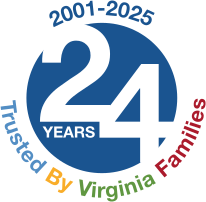So often caregivers are unseen and unsung heroes, head of Centers for Medicare & Medicaid Services says
It’s not surprising that family members, often thrust into caregiving with little notice, find themselves navigating a complex medical system without any training or guidance.
The good news is that changes are underway to help educate family caregivers on the ins and outs of providing care for loved ones. A new program, designed to improve the quality of life for people with dementia and their unpaid caregivers, is also in the works. Its goal is to help those with dementia remain in their homes longer.
President Joe Biden signed an executive order April 18, 2023, to support the country’s 48 million family caregivers. It included more than 50 directives to federal agencies to find ways to better support caregivers, who provide what AARP estimated in 2021 to be more than $600 billion each year in unpaid labor to take care of family and friends. AARP supports the order.
“I feel like I’ve learned all the things on the fly,” says Jessica Guthrie of Fredericksburg, Virginia, who has been caring for her mother for the past 10 years. Guthrie was part of a May 20 panel discussion at Arlington’s VHC Health, formerly Virginia Hospital Center, with the head of the Centers for Medicare & Medicaid Services, a health care provider, and AARP’s chief advocacy and engagement officer.
“Caregivers are a vital part of our health care system in doing things like helping with medication management, transportation to appointments, food shopping, bathing and dressing, and getting around the house,” says Chiquita Brooks-LaSure, administrator of the Centers for Medicare & Medicaid Services. “So often caregivers are unseen and unsung heroes. We at CMS have tried to make sure that in fulfilling our mission to deliver better health and better health care to all people, that we strengthen our support for caregivers.”
Three changes have already begun to help family caregivers:
1. Providers get paid to train family caregivers
Under a rule that took effect Jan. 1, doctors, clinical psychologists, nurse practitioners, physical therapists and other health care providers can bill Medicare for time spent training family caregivers.
Family members who are helping aging relatives with tasks such as giving injections, managing medications and changing bandages no longer need to worry about spending too much time asking medical providers questions about the steps they need to know.
“When you reach the stage of incontinence, no one actually tells you how to change an adult brief,” says Guthrie, who moved from Texas to Virginia to live with her mom, Constance, as Alzheimer’s decreased her mother’s ability to care for herself. “No one shares with you how to roll someone effectively in a hospital bed to change them with dignity and respect.”
Before the rule, physicians and other health care providers helped caregivers learn the tasks that needed to be done, says Genesis Brown, a certified adult gerontology nurse practitioner and AARP volunteer. They just spent personal time during the day to do so.
At first, Guthrie didn’t realize that she could ask her mother’s primary care physician to arrange for physical or occupational therapy, for help to make a home safe, for instructions to get her mother out of the bed without injuring either one of them, or for a demonstration of wound care.
“It’s a little bit of everything, but you don’t know that you need it until you’re in that chapter,” she says. “I learned what to expect by asking people who were already on the journey.”
2. Patients with serious conditions get extra education
The same rule also allows Medicare to pay for what it calls principal illness navigation services to help patients and their family caregivers with high-risk illnesses such as cancer, dementia and HIV/AIDS understand their diagnosis and decide on their health care.
“It’s so easy to shut down or have no idea what to do because you’re suddenly confronted with a whole new set of people you need to see and providers,” Brooks-LaSure says. “Not only for cancer but other serious illnesses, Medicare will pay for more of these services.
“This is intended for people who are in that category where their needs are going to be much more severe. They’re at high risk for hospitalization — everything from chronic obstructive pulmonary disease, heart disease, cancer, congestive heart failure, AIDS, dementia and severe mental illness — to make sure that people have assistance when they are trying to navigate the health care system, which we know is more complex than we’d all like it to be.”
Brown says she would discharge patients from a hospital’s intensive care unit, asking family members what they needed to know. But they had no idea what they needed.
3. Pilot project begins for dementia patients’ caregivers
A test program for caregivers whose loved ones have dementia started on July 1, 2024, and will expand next July. Called Guiding an Improved Dementia Experience (GUIDE), the program includes 24/7 access to a support line, care coordination, caregiver training and at-home or adult day care respite services.
“It’s never been Alzheimer’s disease that’s been difficult about the journey,” Guthrie says. “It’s been navigating the health care system that’s been difficult.”
CMS selected 96 organizations to participate in the program, including academic medical centers and other hospitals, small and large group practices and community-based organizations already providing programs for dementia patients. CMS chose 294 more organizations to join the program next July.
People with dementia and their caregivers are assigned to a care navigator who helps them access medical services as well as meals and transportation through community-based organizations.
The program includes a care plan, ongoing monitoring and support, and provides caregivers with education and skills training. “We all understand that caregivers are part of the health care team,” says Maria Carney, M.D., chief of the division of geriatric and palliative medicine at Northwell Health in New York. “We have to make sure they’re educated and know what resources are out there and we support them when they’re struggling.” She points out that caregivers are having to do more complex medical care, such as giving injections, infusions, medications, draining catheters, crushing pills and doing wound care.
Northwell Health has been providing similar services through its Alzheimer’s and Dementia Care program for three years and looks forward to expanding the program with CMS support through GUIDE. “We did a lot of coordinated services on a much smaller scale, and we’re lucky to grow this to more families and provide more support,” says Kaitlin Emmert, a social worker in the geriatrics and palliative medicine division, who works directly with GUIDE patients and caregivers. “We’re able to connect them with the services they need to be able to remain at home as long as possible.”
Medicare pays participating organizations monthly to provide services; patients and their caregivers typically won’t have copayments or pay out-of-pocket for the services.
What’s more, GUIDE will provide each patient with a $2,500 annual stipend for respite benefits, which can pay for in-home caregivers, overnight respite care or adult day care centers to give the caregiver a break. The programs contract with statewide or local organizations to provide the respite service, making it easy for caregivers to access benefits.
Lee A. Jennings, M.D., associate professor and section chief of geriatric medicine at the University of Oklahoma Health Sciences Center, is impressed with the program. OU Health plans to enroll about 85 eligible patients currently in its dementia program in GUIDE with plans to cover up to 200 patients throughout the state. “We don’t take over your primary care — we’re working with your primary care providers,” Jennings says.
To qualify for the GUIDE program, the patient must be enrolled in original Medicare, not Medicare Advantage, and have a dementia diagnosis rather than mild cognitive impairment. They can’t be in hospice or a long-term nursing home resident.
CMS offers a fact sheet for patients and caregivers for more information and a link to its CMS Innovation website, where you can find a list of participating organizations.
Click GUIDE Model in the drop-down models list | display selected.
If you find an organization in your area participating in the program, contact them to see if it’s taking new patients and if your loved one is likely to qualify. The program will conduct an initial evaluation before determining eligibility.
“I think medical people have typically seen caregivers as functions as opposed to people who need wellness themselves,” says Ellen Carbonell, who created the Caring for the Caregivers program at the Rush University Health System in Chicago in 2019. Rush’s evidence-based program to help caregivers includes many of the same services as the GUIDE program, but additional CMS funding eliminates many of the copayments that participants had to pay. “This is going to allow a lot more people who previously couldn’t afford to meet their out-of-pocket components of billing to get involved in the program.”
More than 6.7 million Americans were living with dementia in 2023, according to the National Institutes of Health. Without any breakthroughs to curb the condition, cases could grow to 13.8 million by 2060.
“Caregiving is an unpaid job that does not discriminate by gender, race, age or any other demographic,” says Nancy LeaMond, an AARP executive vice president and its chief advocacy and engagement officer. She and her two sons took care of her husband, Steve, at home for six years before he died in 2019 of amyotrophic lateral sclerosis (ALS), also known as Lou Gehrig’s disease.
“I always felt like I was on the sidelines with all the … discussions,” she says. “But these steps that talk about how you integrate the care the family caregiver is providing is so important. We hope this will lead to models for other disease.”
--------- Written by Kimberly Lankford, AARP, May 23, 2024, and updated after the GUIDE program was officially launched in July.
AARP was founded in 1958 and has over 38 million members. It is a nonprofit, nonpartisan organization for people over the age of 50. AARP is well-known for its advocacy efforts, providing its members with important information, products and services that enhance quality of life as they age. They also promote community service and keep members and the public informed on issues relating to the over 50 age group.

